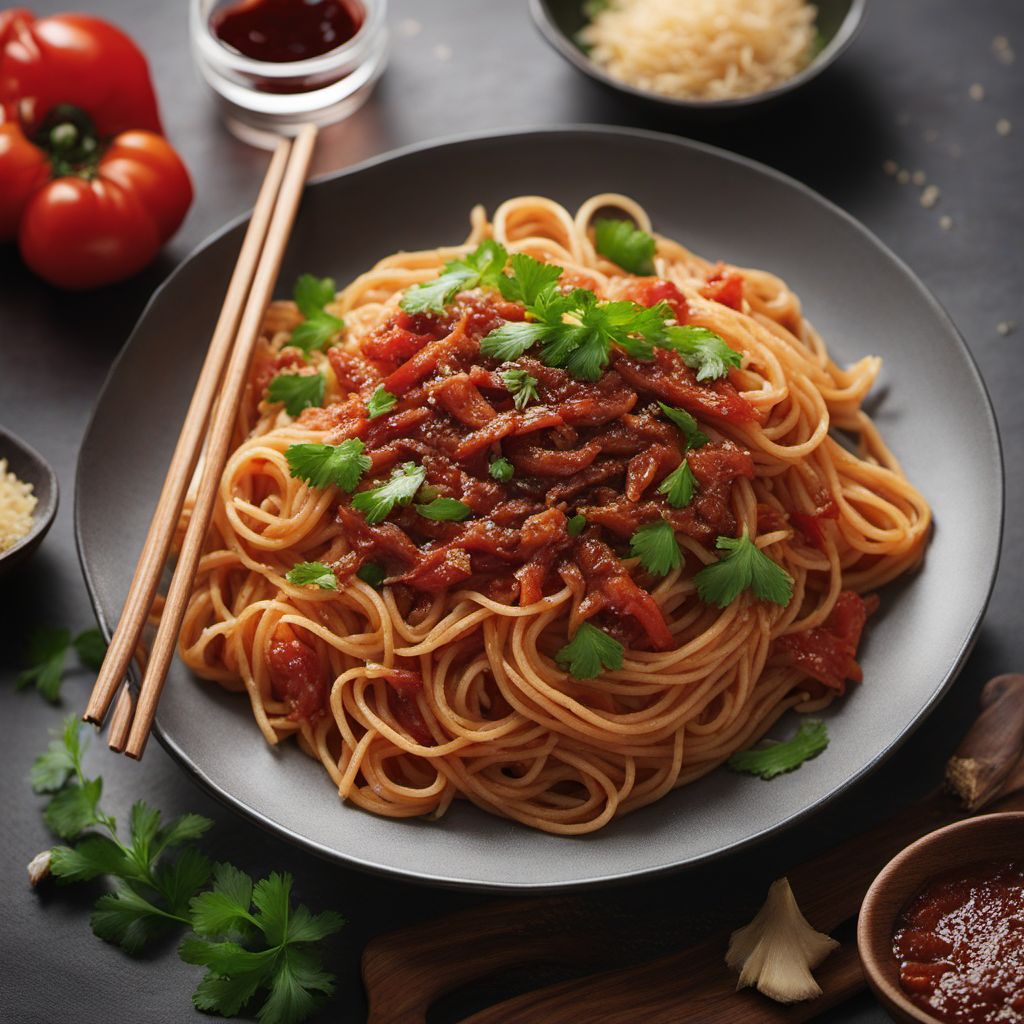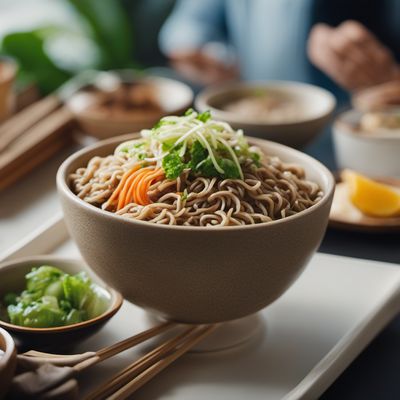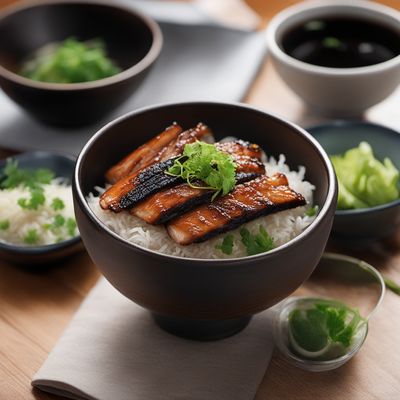
Recipe
Naporitan Pasta with a Japanese Twist
Umami Fusion: Japanese-Inspired Naporitan Pasta
4.8 out of 5
Indulge in the delightful fusion of Italian and Japanese flavors with this unique Naporitan Pasta recipe. Combining the vibrant colors and umami-rich ingredients of Japanese cuisine with the classic Italian pasta dish, this recipe offers a tantalizing experience for your taste buds.
Metadata
Preparation time
15 minutes
Cooking time
20 minutes
Total time
35 minutes
Yields
4 servings
Preparation difficulty
Easy
Suitable for
Omnivore, Pescatarian, Dairy-free, Nut-free, Egg-free
Allergens
Pork (bacon)
Not suitable for
Vegetarian, Vegan, Gluten-free, Paleo, Keto
Ingredients
-
250g (8.8 oz) spaghetti 250g (8.8 oz) spaghetti
-
4 slices of bacon, diced 4 slices of bacon, diced
-
1 onion, thinly sliced 1 onion, thinly sliced
-
1 bell pepper, thinly sliced 1 bell pepper, thinly sliced
-
100g (3.5 oz) mushrooms, sliced 100g (3.5 oz) mushrooms, sliced
-
2 cloves of garlic, minced 2 cloves of garlic, minced
-
2 tablespoons tomato ketchup 2 tablespoons tomato ketchup
-
1 tablespoon soy sauce 1 tablespoon soy sauce
-
1 teaspoon ginger, grated 1 teaspoon ginger, grated
-
Salt and pepper to taste Salt and pepper to taste
-
Fresh parsley, chopped (for garnish) Fresh parsley, chopped (for garnish)
Nutrition
- Calories (kcal / KJ): 420 kcal / 1760 KJ
- Fat (total, saturated): 12g, 4g
- Carbohydrates (total, sugars): 60g, 8g
- Protein: 16g
- Fiber: 4g
- Salt: 2g
Preparation
-
1.Cook the spaghetti according to package instructions until al dente. Drain and set aside.
-
2.In a large skillet, cook the diced bacon over medium heat until crispy. Remove the bacon from the skillet and set aside, leaving the bacon fat in the skillet.
-
3.In the same skillet, add the sliced onion, bell pepper, and mushrooms. Sauté until the vegetables are tender.
-
4.Add the minced garlic to the skillet and cook for an additional minute.
-
5.Return the cooked bacon to the skillet and stir in the tomato ketchup, soy sauce, and grated ginger. Mix well to combine.
-
6.Add the cooked spaghetti to the skillet and toss until the pasta is evenly coated with the sauce.
-
7.Season with salt and pepper to taste.
-
8.Serve the Naporitan Pasta hot, garnished with fresh parsley.
Treat your ingredients with care...
- Bacon — Choose a high-quality bacon with a good balance of fat and meat for the best flavor.
- Soy sauce — Opt for a low-sodium soy sauce if you prefer to control the saltiness of the dish.
- Ginger — Use fresh ginger for a vibrant and aromatic taste. Grate it just before adding it to the dish to preserve its flavor.
Tips & Tricks
- For a spicier kick, add a pinch of chili flakes or a dash of hot sauce to the sauce.
- Customize the vegetable selection based on your preferences. Add carrots, peas, or corn for additional color and texture.
- If you prefer a vegetarian version, substitute the bacon with smoked tofu or tempeh for a smoky flavor.
- Adjust the sweetness of the dish by adding a teaspoon of sugar or honey to the sauce if desired.
- Serve the Naporitan Pasta with a sprinkle of grated Parmesan cheese for an extra touch of richness.
Serving advice
Serve the Japanese-inspired Naporitan Pasta as a main course, accompanied by a fresh green salad and crusty bread. It pairs well with a light-bodied red wine or a refreshing iced tea.
Presentation advice
To enhance the presentation, twirl the spaghetti strands using tongs or a fork before placing them on the plate. Garnish with a sprinkle of fresh parsley for a pop of color. Serve the dish in a shallow pasta bowl to showcase the vibrant colors of the ingredients.
More recipes...
For Naporitan
For Japanese cuisine » Browse all
More Japanese cuisine dishes » Browse all

Hikkoshi soba
Hikkoshi soba is a Japanese dish that is traditionally eaten on moving day. It is a simple dish that consists of soba noodles, green onions, and a...

Momiji manjū
Momiji manju
Momiji manjū is a traditional Japanese sweet that is shaped like a maple leaf and filled with sweet red bean paste. It is a popular snack in Japan...

Zaru soba
Cold Buckwheat Noodles
Zaru soba is a Japanese noodle dish that is known for its simplicity and purity of flavor. The dish is made with soba noodles, which are thin and...






